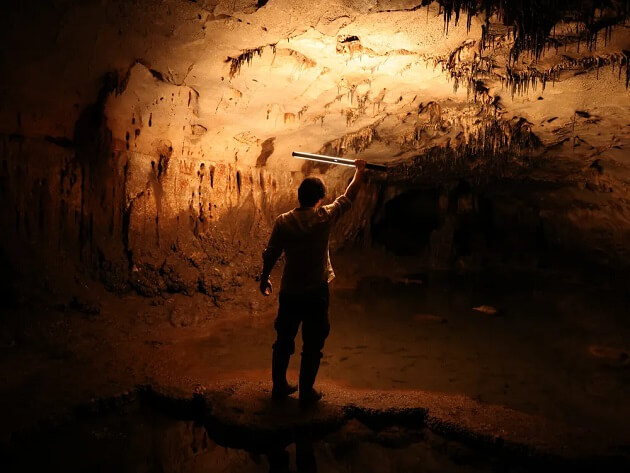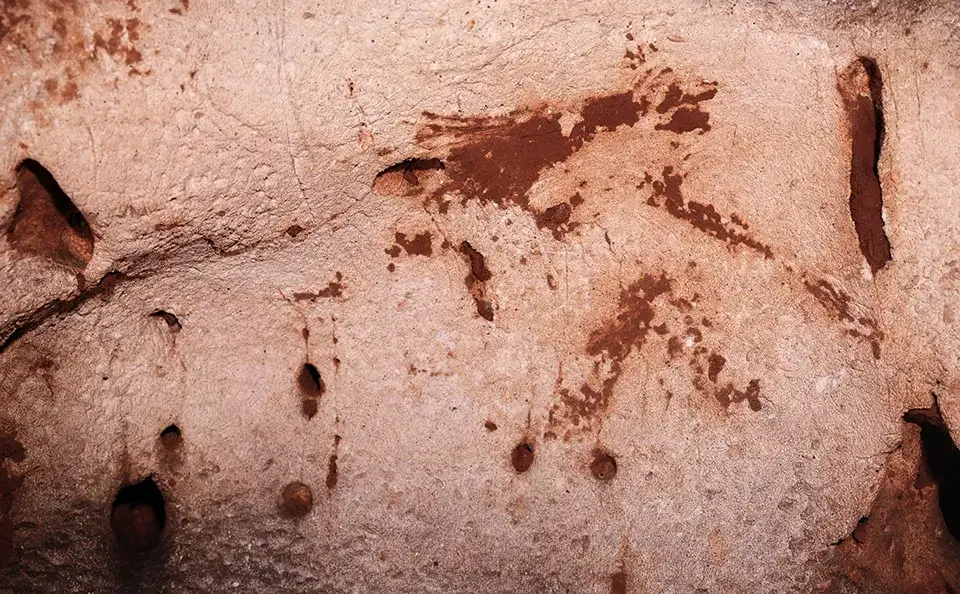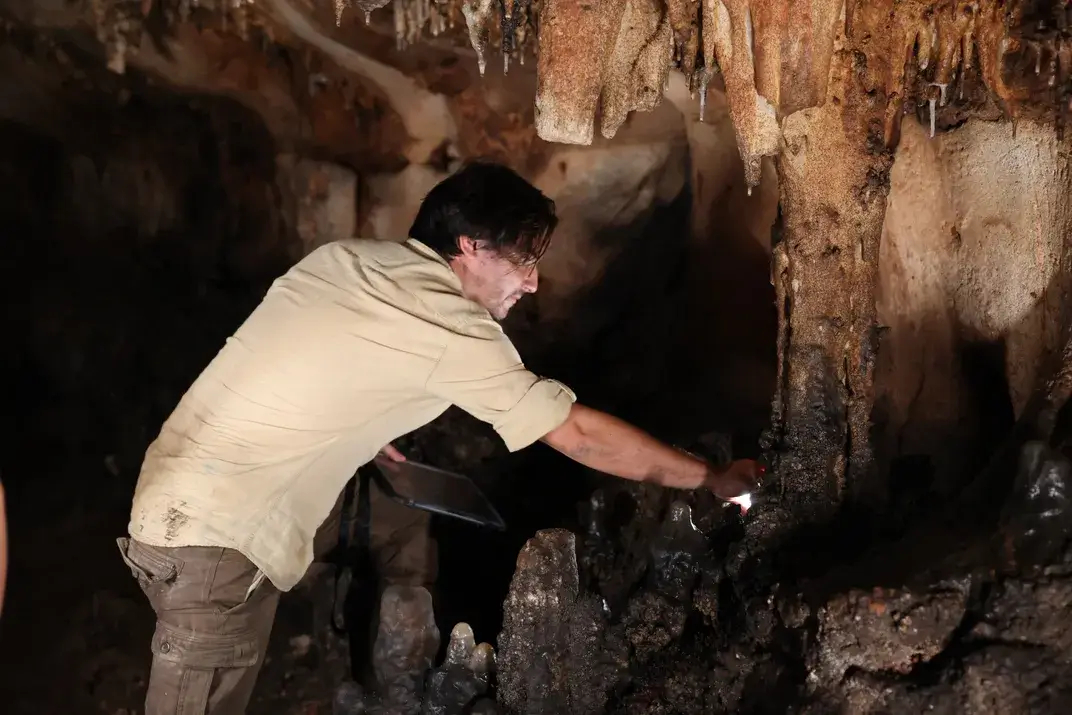
Archaeologists Discover More Than 100 Ancient Drawings In A Spanish Cave
Many of the works, estimated to be at least 24,000 years old, employ a rare clay painting technique
By: Teresa Nowakowski | Smithsonian
Two years ago, when a team of archaeologists spotted a painting of an extinct wild bull called an auroch on the wall of a cave in Spain’s Cova Dones, located in Millares, near Valencia, they knew it was important.
While Spain has the largest number of Paleolithic cave art sites, most are concentrated in the country’s northern region, while few have been documented in Eastern Iberia.
However, they didn’t realize just how significant the newly discovered cave art was until they returned to fully document it.
“Once we began the proper systematic survey, we realized we were facing a major cave art site, like the ones that can be found elsewhere in Cantabrian Spain, southern France or Andalusia, but that totally lack in this territory,” Aitor Ruiz-Redondo, an archaeologist at the University of Southampton and the University of Zaragoza and an author of a new study about the find, says in a statement.

Inside, the archaeologists documented more than 100 drawings and engravings, which they believe are at least 24,000 years old, according to the study published last week in Antiquity.
The team dated the drawings to the Paleolithic Period by examining weathering on the drawings and claw marks from a cave bear that later became extinct.
This Documentary by National Geographic Reveals That There Are Aliens on the Moon
Among the motifs, or drawings, are at least 19 confirmed animal representations, including hinds, horses, aurochs and deer.

“The cave is arguably the ‘most important’ Paleolithic rock art site ever discovered on the eastern coast of the Iberian Peninsula, the researchers said,” Newsweek’s Aristos Georgiou writes.
The researchers believe it is the Paleolithic cave with the greatest number of motifs discovered in Europe since 2015.
One of the most notable parts of this new discovery is the way the drawings were created.
While some are etched and others shaded with white mondmilch, a type of limestone precipitate, the majority are clay-based. “Red clay found on the cave floors was the medium of choice for the Cova Dones occupants—rather than the diluted ochre or manganese typically used in other places throughout the region,” writes Matthew Ward Agius of Cosmos. “Clay-based painting is a rarely-used technique in Palaeolithic art.”
Indeed, the rare technique initially proved difficult to spot, as the red clay had been partially covered by calcite over time, reports Hyperallergic’s Elaine Velie.
“Animals and signs were depicted simply by dragging the fingers and palms covered with clay on the walls,” Ruiz-Redondo says in a statement.
“The humid environment of the cave did the rest: the ‘paintings’ dried quite slowly, preventing parts of the clay from falling down rapidly, while other parts were covered by calcite layers, which preserved them until today.”

The archaeologists hope their find, especially its unique art techniques, will prove an important contribution to the study of cave art in the area.
“We expect that the documentation of this large number of ‘clay paintings’ in Cova Dones will lead to us and other teams to pay more attention to the presence of this kind of pigments in other caves,” Ruiz-Redondo tells Hyperallergic.
Let us know your thoughts below in the comment section.
* * *
NEXT UP!
Gobekli Tepe: The World’s First Temple?
Six miles from Urfa, an ancient city in southeastern Turkey, Klaus Schmidt has made one of the most startling archaeological discoveries of our time: massive carved stones about 11,000 years old, crafted and arranged by prehistoric people who had not yet developed metal tools or even pottery. The megaliths predate Stonehenge by some 6,000 years.
The place is called Gobekli Tepe, and Schmidt, a German archaeologist who has been working here more than a decade, is convinced it’s the site of the world’s oldest temple.
* * *
READ MORE: This Ancient Maya City Was Hidden In The Jungle For More Than 1,000 Years
More on Archaeology: Guanches: Ancient Mummies of The Canary Islands (Video)
Liked it? Take a second to support Collective Spark.
We’d love to hear from you! If you have a comment about this article or if you have a tip for a future Collective Spark Story please let us know below in the comment section.
